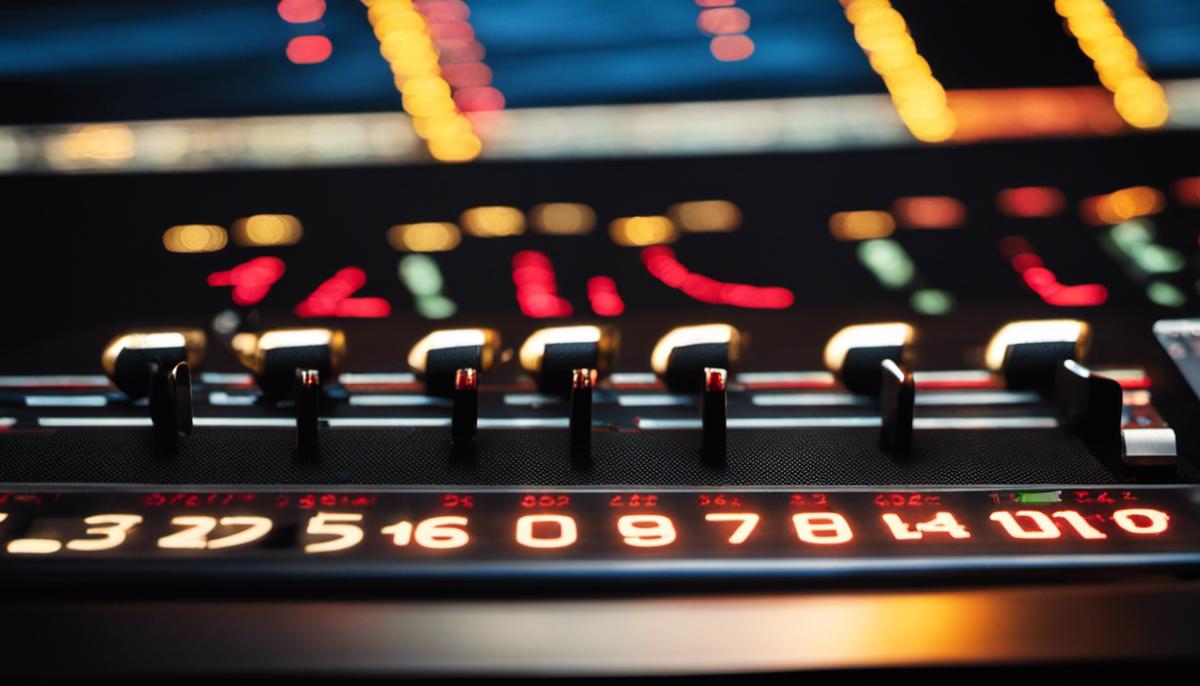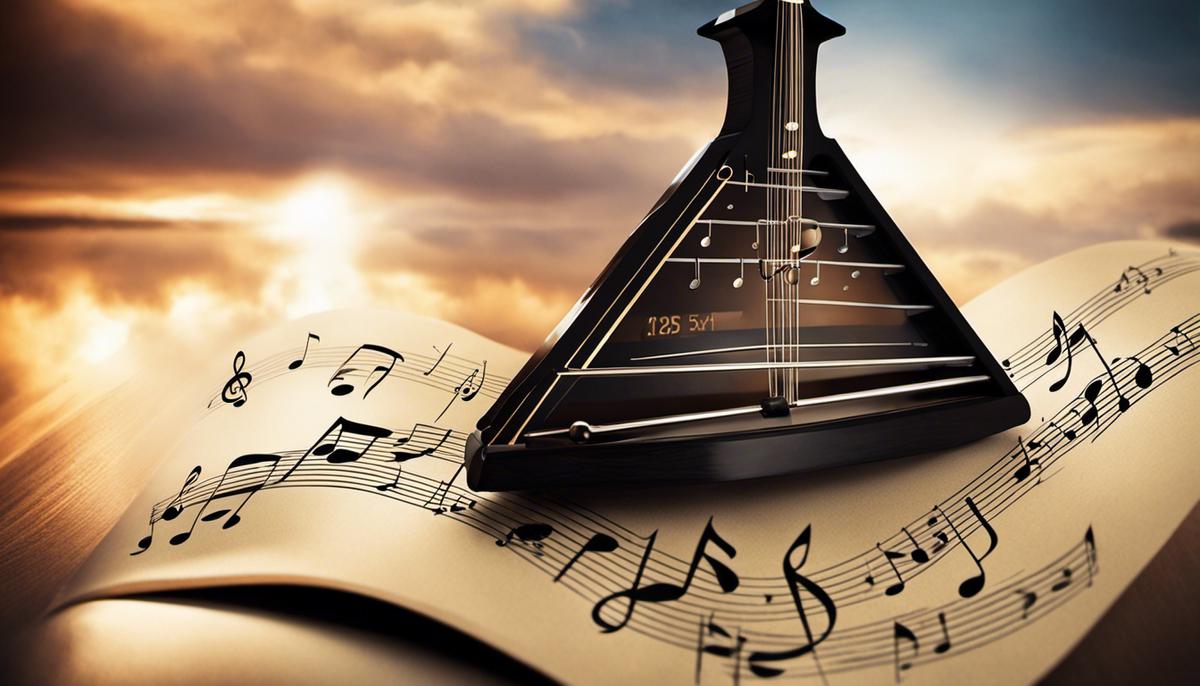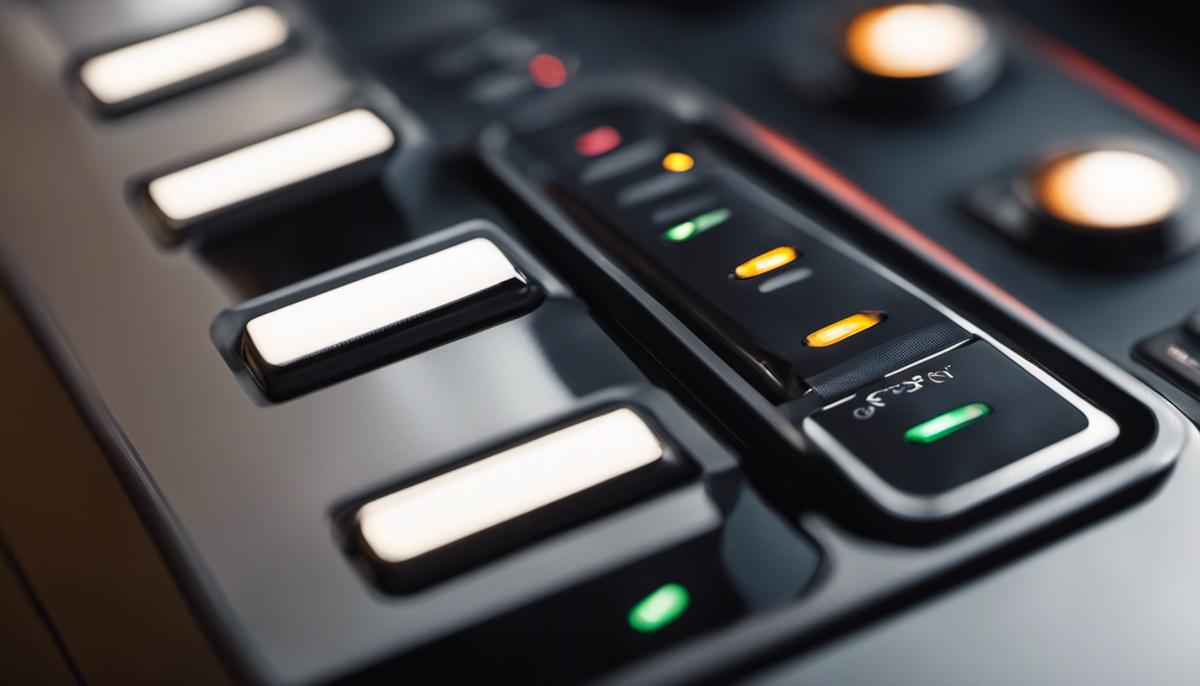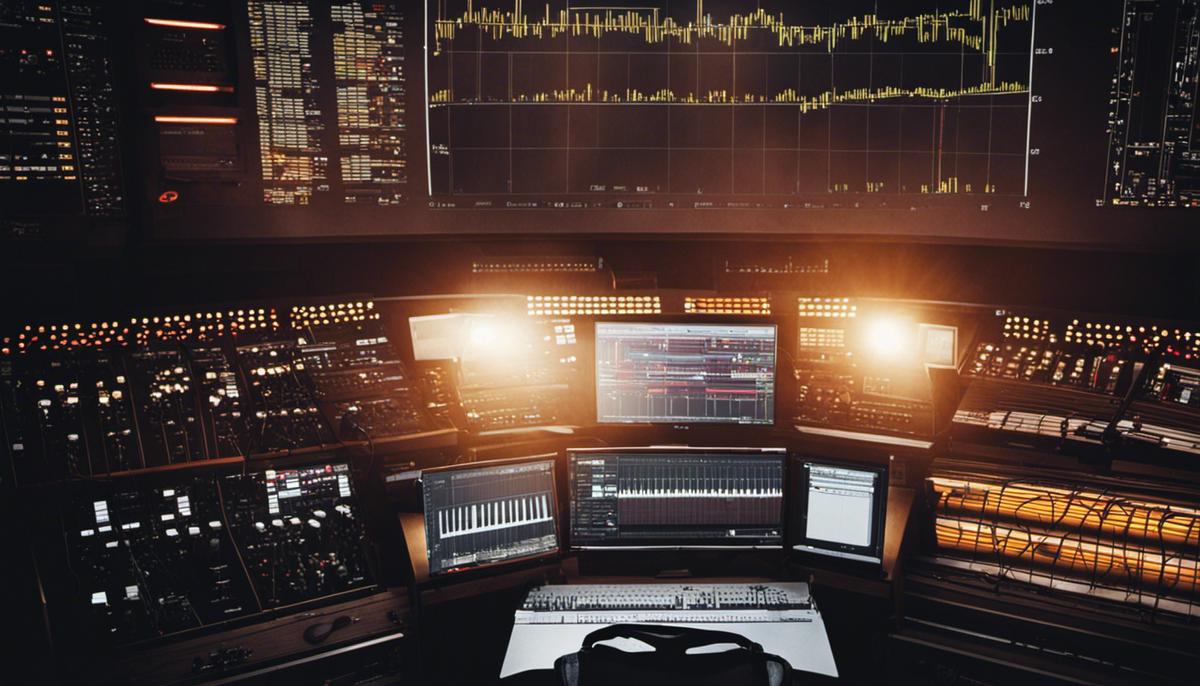In the vast and complex realm of music production, the seemingly minute yet profound element known as the ‘click track’ holds importance that can’t be underestimated. With its history deeply rooted in the annals of sound engineering, the click track has evolved to become an indispensable tool for musicians and producers alike, crafting detailed audio tapestries with rhythmic precision. This essay aims to unpack the intricacies and quirks of click tracks, from its integral role in shaping the quality of a musical piece to the technological advancements that have honed its relevance in recent times. Laced within are insightful case studies where the timeless tunes in our playlists have danced to the rhythm of the click track, making music what it is today- an aural delight.
Understanding the Click Track
Stepping into a heartbeat, measuring the pace of pulsations; that’s what beginning a music piece feels like. The rhythm sways, setting a rhythmic vista, radiating uniformity and consistency so crucial to a track’s soul. This founder of rhythm, the lodestar guiding the melodic ship, is none other than the humble, oft-unsung hero: the click track.
At first blush, the click track might seem like a mere rhythmic metronome. But it’s more than that. It’s an invisible member of the band; an unassuming shepherd leading the musical flock to coherence. The unsung conductor weaving a symphony of tunes, the click track carves out a vital role in the recording process.
To dissect the world within a click track, one needs to embrace its mechanism. It’s not a frivolous noise in the background. It emanates a series of audio cues, offering the ever-so-required synchronization and timing for all engaged in the performance. As simple as it may seem, the click track is the melodious storyteller, narrating each note’s when and where, hiding behind the curtain while the show goes on, the quiet lighthouse guiding the ship to safe harbor.
Digging deeper into the intertwining threads of a click track’s role, its significance cannot be understated during multiple takes or multitracking in a recording session. When layers of various harmonies and instruments are stacked, synchronization is paramount. And who’s the maestro pulling all strings together? The click track, shrouding everyone under its rhythmic umbrella, ensuring that the plethora of tones dance together in harmony, not stepping on each other’s toes.
Remember, that sound engineers, those magicians in the studio, rely heavily on click tracks. It makes their work smoother, with the decibel timing being the thread between tracks. The tempo mapping becomes seamless, and punching in and out of the live recording avoids any disturbance in the musical continuum. The music weaves in and out effortlessly, guided by the invisible thread of the click track.
Moreover, in our age of unstoppable technology, the click track juggles an assortment of roles. From cueing synths, controlling light shows incorporating pyrotechnics, to even aligning the stage smoke, the enthralling spectacle of a live show is orchestrated in part by the click track. A steady rhythm not only ties together the intricate tapestry of sound but synchronizes an impactful visual experience.
Much to the bewilderment of many, the click track works in mysterious ways. It lives in the shadows, the cognitive phantom guiding the symphony; invisible, yet influential. It’s the silent clock tick-tocking in the vast auditorium of melody, marking the pace of every note and chorus. A pedestrian listener might not realize its existence but peel back the layers, and you find the click track, standing tall and crucial in the world of musical magicians.
The true power of the click track lies not in its sound, but in its silence, its skill of operating subtly. It is the unseen melody, the uncredited rhythm, laying out the canvas for the music to play with splashes of vocal tones and instrumental colors.
So the next time you get lost in the mesmerizing labyrinth of music, remember to appreciate the invisible maestro, the click track, whose silent whispers breathe life, rhythm, and synchronicity into every note that reaches your ears.

The Relationship Between Timing and Musical Quality
“Accurate Timing: The Pulse Behind Artistry and Resonance in Music”
A symphony of sublime acoustics or a riotous rock concert – what is the omitted denominator that harmonizes each note into a sensational melody? With the omnipotent but behind-the-scenes pulse of a metronome or click track, the real maestro, having already been examined, let us delve deeper to comprehend how precise timing modulates the overall allure and quality of a musical masterpiece.
Every pulsating beat in a musical composition is analogous to the rhythm of a heart. As intricate as lacework, this heartbeat crafts an enthralling cadence that manages to whisper to the soul, command a foot to tap, or coax tears from a listener’s eyes. With the same austerity as the nation’s constitution, the integrity of a piece stands on the important tenet of accurate timing.
Elaborated as the milliseconds that separate amateur from virtuoso, precise timing is the defining factor that moulds an auditory experience. Picture a snare drum smacking its sharp, crisp note a millisecond too soon or too late. It skews the very skeleton on which a piece of music stands, compromising melody and rhythm, that ultimately leads to a discordant audio experience. Visualize accurate timing as orchestrating notes along the timeline of a track, a conductor coordinating the dance between melody and rhythm, dictating the rise and fall of a symphony, or blending the pitch-perfect vocals cruising above guitar shredding.
To understand the magic imbued in precision further, let’s venture into the realm of jazz and reggae, where timing fluctuates as per artistic interpretation. The unique syncopation of ‘offbeat’ notes lends these genres their characteristic charm. This flexible timing, or “swing time,” permits musicians to articulate emotion, inducing a creativity-sparking variance. Thus, accurate timing in this context is not just confined to mechanical precision, but also involves a dynamically nuanced comprehension of rhythm that entrusts the performers with regulating timing to enhance their expressive potential.
Diving into the hemisphere of the audience, accurate timing also shapes how music is perceived. Have you ever noticed your foot automatically tapping in response to a catchy tune? This phenomenon, referred to as ‘entrainment,’ stems from the accurate timing embedded in the music. Humans have a natural propensity to synchronize movements with a rhythm pattern. When beats are punctually delivered, it allows listeners to carve a physical and emotional connection with the music- swaying, dancing, or simply absorbing the synergy spun around them.
Certainly, while on the journey of constructing a musical piece, unleashed creativity and fervent composition are crucial. Nonetheless, these elements resonate potently only when they synergize with the carte blanche bestowed by accurate timing. As a true testimony to the chi of music, accurate timing gifts musical pieces their pulse- a life force that resonates within the listener and arouses the gamut of human emotions within their soul.
Ultimately, the beat whispers its silent mantra, ‘timing is everything.’ Its pulse embedded within the symphony of notes and silences, accurate timing, fuels the heart of music, knitting together the essence of raw passion and refined artistry, producing a tapestry that is by every means- a masterpiece.

Advanced Click Track Techniques
Foraying into the deeper echelons of music production and performance, the click track emerges as the beating heart, a digital maestro, driving musicians towards luminary heights of virtuosity. Let’s delve into advanced strategies artists and producers use with click tracks to encode melodies with life, rhythm, and soul.
While the click track’s fundamental purpose is providing synchronization and tempo, advanced musicians are harnessing this tool in innovative ways that extend beyond just basic timing. One such strategy is layering of click tracks. By using multiple click tracks simultaneously, musicians can construct rhythmic textures that epitomize complexity and ebb with layered nuances. This technique is incredibly empowering for granting total control over the tonal structure, thus enabling rhythmic creativity to flourish unrestrained.
Another sophisticated maneuver with click tracks involves flexible tempo mapping. It is a technique where the tempo is intentionally varied over the course of a song to evoke an array of emotional responses—an elusive effect when sticking with a single metronome setting. The variation in tempo provides a semblance of the human touch within the calculated precision of the digital milieu, fostering a more organic musical experience.
Complementing the flexible tempo mapping, the use of accelerando and ritardando—gradually speeding up and slowing down the tempo—within the click track is another advanced strategy. These subtle tempo changes can drive a change in both the emotional contour and the narrative curve of a song, immaculately aligning the pace and intensity of the music with the lyrical subplot.
Augmentation of the click track with auditory cues is another game changer. Adding in auditory cues, such as strikes or chimes, to signify transitions, such as verse-to-chorus shifts, further enhances the correspondence between musicians during live performances and recording sessions. This cueing system arms musicians with the perceptual tools necessary for crafting the musical masterpiece where each nuance is attuned to the overarching rhythm and melody.
In the realm of electronic music, producers have begun automating parameters within the click track, regulating factors like reverb, pan, and filtering. Thereby not only creating intricate rhythmic patterns but also exploiting the sonic space, thus moulding the soundscape dynamically in compliance with the music’s emotional undertow.
The culmination of these advanced strategies infuses the creations of musicians and producers with an unmatched temporal control and ravishing rhythmic resonance. The click track, therefore, carves its niche as not just an invisible metronome, but a tool for injecting depth, dimension, and dynamism into the music. Indeed, the true power of the click track lies in its adept ability to unshackle the chain of rigid timing, unfurling a world where each pulse, each beat, each rhythm is a conduit to explore the boundless canvas of musical creativity.

Impact of Technology on Click Track Usage
As we pull back the curtain on the musical universe, the click track stands there – its rhythmic heartbeat pulsating through the veins of countless symphonies, choruses, blues jams, and head-bang inducing metal anthems. With relentless steadiness, this unsung hero shapes soundscapes, empowers performers, mesmerizing audiences across the globe. It’s time we delved into the mind-bending world of technological advancements and saw how they’re redefining the boundaries of what the humble metronome can achieve.
Music, as art, has always held hands tightly with technology – stretching boundaries, discovering uncharted territories. Technological advancements have made audible frequencies, that once echoed through grand concert halls, accessible to humble living-rooms and commuting ears. Currently, technology is breathing new life into timekeeping mechanisms, reshaping the way the click track interacts within the music creation process.
High-tech soundboards and software enable layering of click tracks, providing unique time signatures for different musicians within a single song. It’s like a symphony of metronomes, each beating to its drummer’s tune, creating an impeccably timed harmonious whole. Complex musical pieces, demanding a variety of time-signatures, dance effortlessly under this guidance.
With flexible tempo mapping, music producers can adjust the beat on the fly to capture crescendos of emotion. This empowers composers to add ebb and flow to the rhythm, embedding accelerando and ritardando within the click track. What once was a static pacer, now dynamically strides alongside the beating heart of the piece.
Especially fascinating is the use of auditory cues to supplement the click track – akin to auditory signposts guiding the musicians on their crossroads. Elements such as swelling pads or chimes can mark section changes in real-time during a recording session, providing seamless transitions.
Venturing into the pulsating terrain of electronic music production, automation of parameters within the click track has become a revelation. Producers can automate volume swells and filter sweeps, lending an additional layer of nuance to the rhythmic constituent of the track. This creates a unique interplay of rhythm and sound color never seen before.
The path being tread by these technological advancements brings the click track out of the shadows and into the spotlight. Transforming it into an accomplice of the creative process, rather than just a clinical precision tool.
Technology, thus, doesn’t just facilitate musical creation – it challenges, inspires and redefines music and its instrumental companions. The metamorphosis of the click track from the metronomic guardian of timing to an intrinsic part of the exploration and expression of music is a testament to this bond. It demonstrates that musicians, technicians, and innovators together are cultivating a landscape where technology’s pulse beats in rhythm with the very heart of music.

Case Studies: Role of Click Track in Iconic Songs
Tuning into the archives of world’s most iconic songs, one gets an awe-inspiring musical treat. An invisible conductor weaves magic, joining varied strings of melody, rhythm, harmony, into a symphony that transcends boundaries and unites hearts. But ever wondered what wields the magic wand to create this extraordinary chorus of cheer and resonance? Right, you got it – it’s the click tracks!
Remember Led Zeppelin’s “When the Levee Breaks?” The thunderous drums that gave the rock ballad an echo effect! Little do many know that it was the artfulness of the click track that made the drums reverberate throughout the song. Bacchanalian beats synchronized with absolute precision, the emotion of rebellion resonates through variegated tempo mapping, all helmed by the click track.
Who can miss The Rolling Stones’ classic “Honky Tonk Woman”? The stellar composition features a cowbell supplemented by the click track, adding a zesty living pulse to the rhythm. The click track thus transforms from a star backstage, the invisible metronome, to an on-stage artist, leaving an indelible auditory cue in our minds.
Moving towards the realm of pop,”Billie Jean”, Michael Jackson’s stunning masterpiece, presents the perfect alliance of the click track with electronic music production. The track’s unforgettable bassline rhythm, so smoothly aligned with the click track, gives a sturdy backbone to the song, making it a perpetual favourite across generations.
Legends like Pink Floyd took the augmentation of click tracks to a whole new level. In their surreal ensemble, ”Time”, they introduced flexible tempo mapping, using increased accelerando and ritardando that created a more poignant and alluring tune. As the song passes from one phrase to another, from the sonorous tick-tock to the alarming bell rings, the music lurches, intoxicates, and numb the listeners. A guitar solo that’s claimed its place in the Hall of Fame, intricate layers of click tracks create a unique time signature that has inspired countless musicians around the globe.
As demonstrated, the click track has been an unsung hero, a conduit of creativity catalyzing the energy, rhythm and spirit of some of the most iconic songs in history, majorly shaping their far-reaching impacts. From Rock ‘n’ Roll to symphonies, from Jazz to electronic, the precision of the click track has assisted in transforming raw artistic ideas into quality composition.
As music aficionados, while we toe-tap to the beats, sway with the rhythm, and hum the melodies, let’s also pay our tributes to the click track – the heart-throb, the pulse generator, the unsung maestro, which keeps the musical world in rhythm.

As we traverse through the extensive landscape of musical prowess, the humble click track rises as an unsung hero, propelling music to the heights of perfection. Its intricate dance with timing peppers every piece with personality while technological innovations continuously redefine its artistry. Buried within the heartbeat of iconic songs, the click track stands testament to the symphony of timing, accuracy, and emotion that characterize music. Nonetheless, the adroit application of advanced click track techniques requires skill, astuteness, and an innate passion for sound – attributes that, when honed, can transform any hobbyist into a maestro. The harmony within the cloak and dagger world of click tracks continues to resonate, painting a myriad of rhythms that underline where we’ve been, where we stand, and the multifaceted musical cadences to which we’re headed.

Comments.
Currently there are no comments related to this article. You have a special honor to be the first commenter. Thanks!